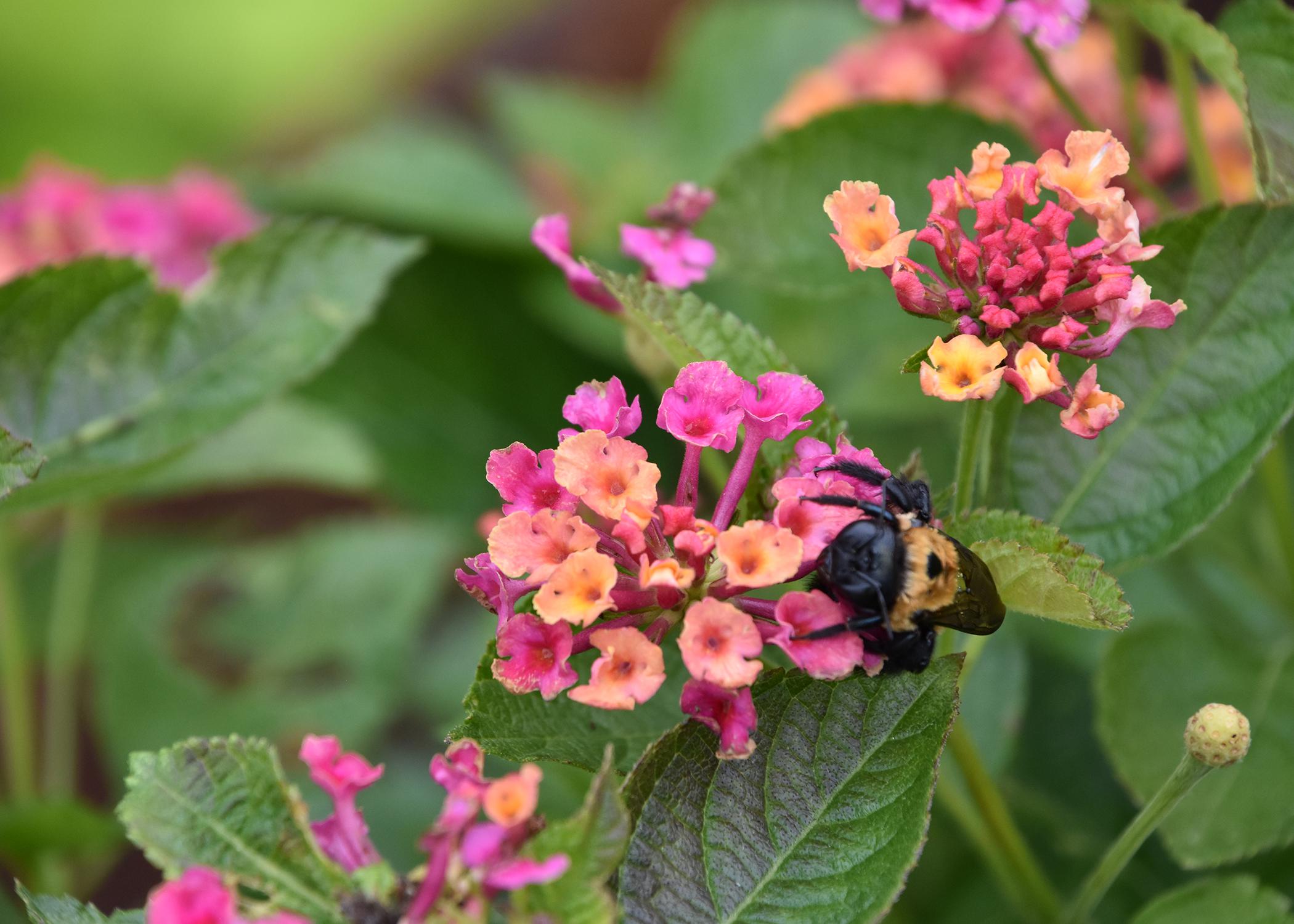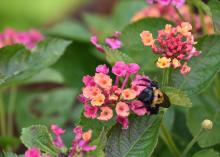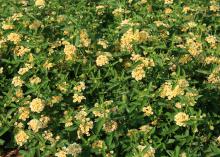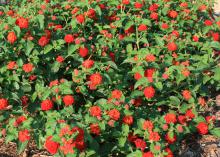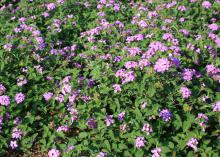Information Possibly Outdated
The information presented on this page was originally released on February 10, 2020. It may not be outdated, but please search our site for more current information. If you plan to quote or reference this information in a publication, please check with the Extension specialist or author before proceeding.
Find a place for Luscious lantana in flower gardens
One of my favorite easy-care, flowering plants has to be lantana. This low-maintenance plant is highly tolerant of the hot, humid summers in our Mississippi gardens.
It’s no wonder that lantana has been selected as a Mississippi Medallion winner three times.
New Gold was the very first plant selected for the program in 1996. This achievement was a whole 25 years ago, but New Gold is still a favorite in many gardens. In 2003, Sunset was the second lantana selected as a Mississippi Medallion winner.
Now, 17 years later, lantana was honored again when the entire Luscious lantana series was named a winner. I’ve been very impressed with the Luscious series since it hit the market a few years ago.
Luscious series lantana has brightly colored flower clusters that cover mounds of dark-green foliage. These plants bloom all summer despite the heat and humidity.
There are quite a few colors available. Lemonade lantanas are mounded plants with bright-yellow flowers. They have extreme heat and drought tolerance and are low maintenance.
The brilliant red, orange and yellow tones of Citrus blend produce a vibrant display of color. They are heat and drought tolerant and have a light, sweet fragrance. Berry blend offers shades of fuchsia to orange and yellow on a tough plant that is hard to beat.
Royale Cosmo has puffs of small, magenta flowers packed into clusters on dark foliage. The last of the Luscious lantanas is Grape. It has purple-lavender flowers that look great when paired with trailing purple verbena.
Plant lantana in full sun for best flowering performance. Landscape beds should be well drained and amended well with organic matter.
Once established, lantana is very drought tolerant. During periods of low rainfall and high temperatures, lantana’s flower colors will make your landscape pop. Prune lightly throughout the summer to help maintain the plant’s size and tidiness and to help stimulate more flowering and a bushier structure.
The only pest of any significance you need to watch out for is lantana lace bug, but some selections seem more resistant to others. This insect produces stippling on the tops of the leaves and a tar-like frass on the undersides. Heavy infestations reduce flowering and even cause the plant to defoliate.
Lantanas attacked by this pest will leaf out and flower again, but seeing them defoliated can cause some concern. Pruning the damage back will help stimulate regrowth.
In previous years, gardeners have been told to use systemic insecticides for control, but there is some concern for how these impact pollinators. Newer control strategies include horticultural oil or using products containing spinosad. Always apply these sprays liberally to the entire leaf surface, especially the undersides, as this is where the lantana lace bugs feed and reproduce.
Fertilize twice per month with a water-soluble fertilizer to maintain flowering potential. In early spring -- mid-February is the perfect timing -- cut your lantana back hard to about 4-6 inches tall to make room the new growth.
Look for Luscious lantana and the other Mississippi Medallion winners at your favorite local garden center this spring.

